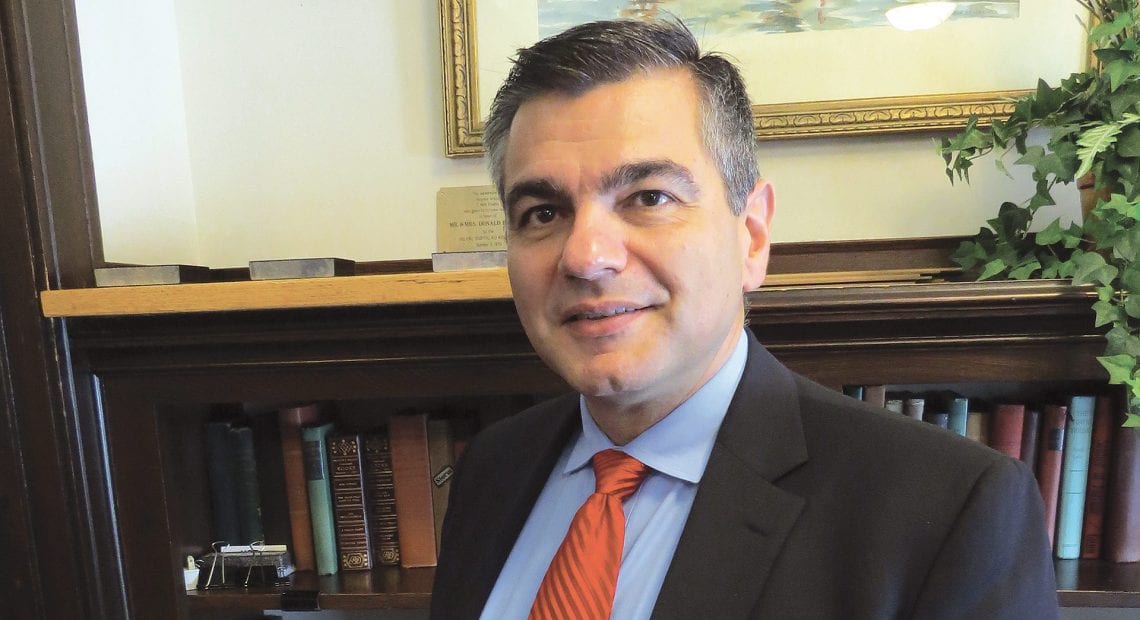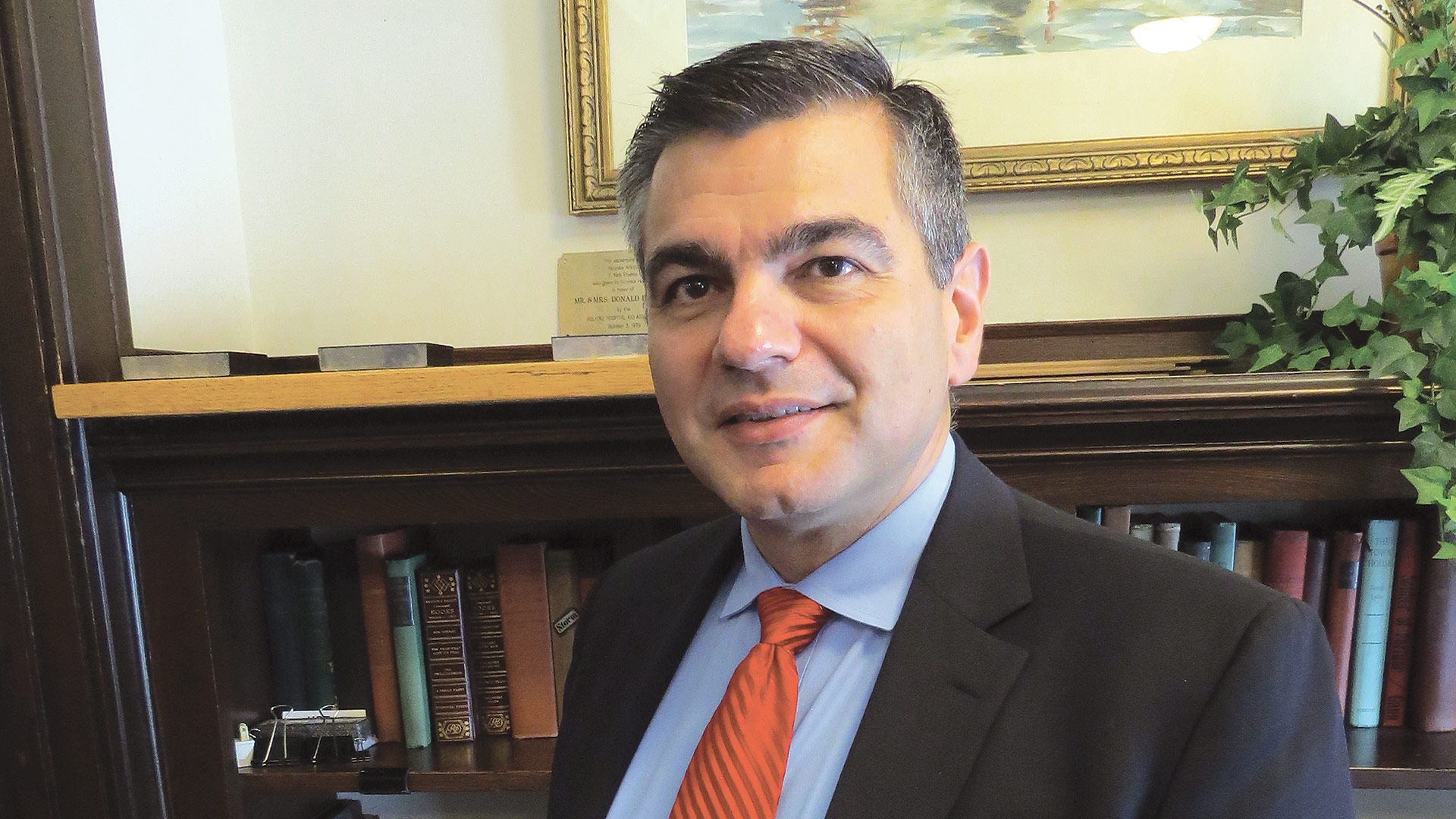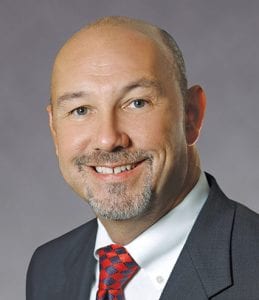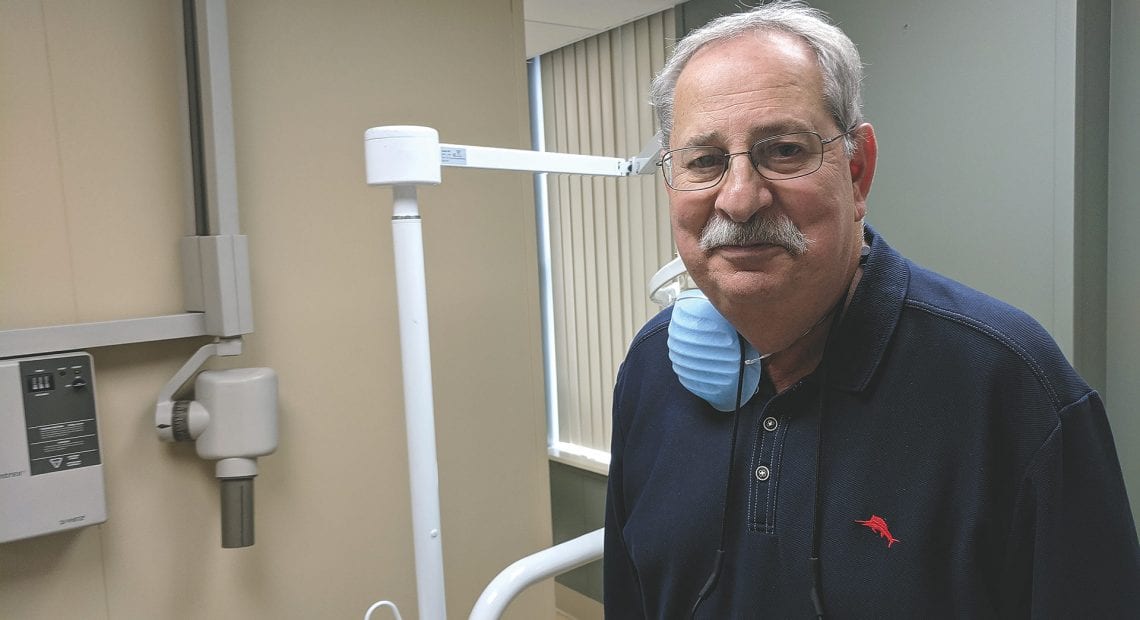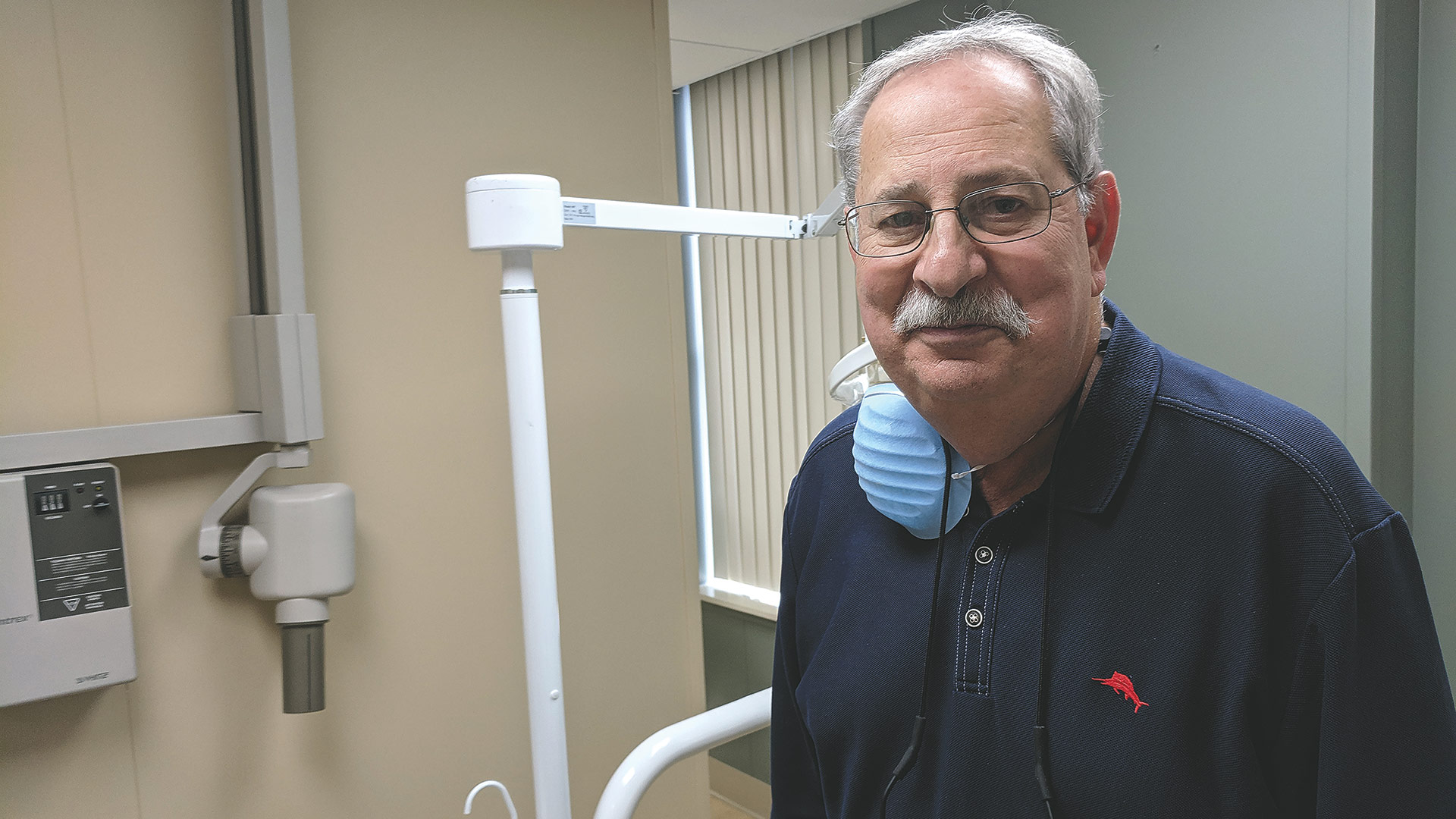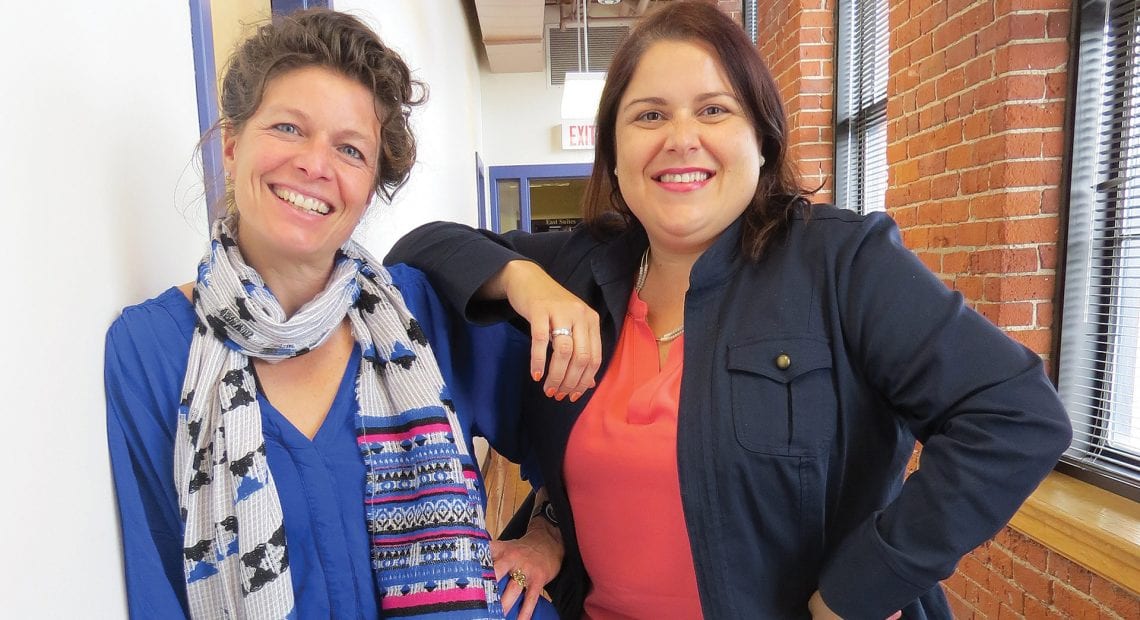Bringing the Future into Focus
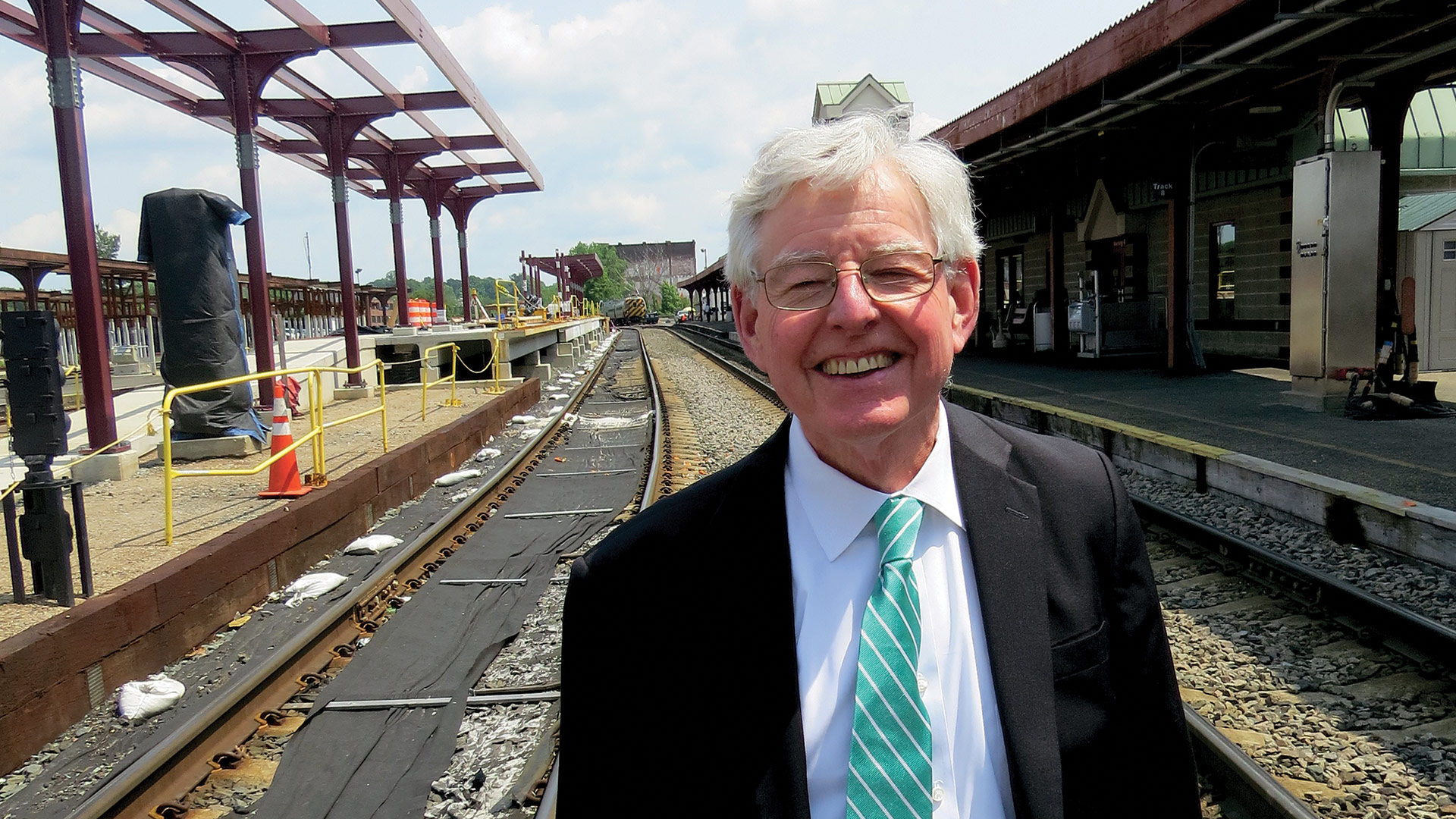
Tim Brennan has made rail service one of many points of emphasis during his tenure.
Tim Brennan’s almost-half-century-long career with the Pioneer Valley Planning Commission will draw to a close later this summer. As he pivots into retirement, Brennan talked with BusinessWest about the many ways the landscape has changed over the past four and half decades, and especially the emergence of a more regional focus in the Valley.
Tim Brennan says that planners — good ones, anyway — live in what he calls “two time zones.”
“One is the present, and the other is typically 20 years out,” he told BusinessWest. “You’re dealing with the here and now, but you’re also trying to anticipate a problem that might hurt us and ward it off, or an opportunity that we should grab and not squander — and all that makes for an interesting career.”
Brennan has been living in these two time zones for nearly 50 years now, the past 47 of them with what is now known as the Pioneer Valley Planning Commission (PVPC), and the past 40 as executive director of that agency, which has a mission effectively summed up in its name.
Over those years, Brennan and the PVPC, always working collaboratively with municipalities, state leaders, and other business and economic-development-related agencies, has succeeded in changing the local landscape in all kinds of ways — from cleanup of the Connecticut River to creation of the Western Mass. Economic Development Council; from the building of bike trails across the region to the re-establishment of north-south rail service to a number of Western Mass. communities.
“You’re dealing with the here and now, but you’re also trying to anticipate a problem that might hurt us and ward it off, or an opportunity that we should grab and not squander — and all that makes for an interesting career.”
It was primarily a desire to continue working on the front lines to expand that north-south rail service, among other pressing projects, that has kept Brennan in this job into his 70s (he’s now 71), although he is coming to the end of the line, as they say in the rail industry, when it comes to this phase of his life.
Indeed, Brennan will be officially retiring toward the end of August, handing over the reins of the PVPC to a successor to be chosen in a matter of days.
So, for this issue, we conducted what amounts to an exit interview with Brennan, whose work has been spotlighted in this magazine on countless occasions, perhaps most notably when BusinessWest bestowed its coveted Difference Makers award upon him in 2011.
Looking back on his career, Brennan said there have been a number of success stories, none of which were scripted quickly or easily. In fact, he said, over the course of his nearly 50-year career, patience and tenacity have been his (and his agency’s) best virtues — out of necessity.

Tim Brennan says there’s still work to do, but the Connecticut River is no longer the “best-landscaped sewer in the country.”
“One of the hardest lessons I learned, and I learned it early on, is that oftentimes, you can make the best of plans, but that doesn’t guarantee they’ll get implemented,” he noted. “You’ve got to stay with it because the planner is frequently not the implementer; you have to keep trying if it’s a good idea.”
As an example of this phenomenon, he cited the PVPC’s long and hard work to create bike trails.
“Back in the ’70s, a concept that came up was the Five College Bikeway; it got a lot of attention and a lot of buzz,” he explained. “But after the buzz wore off, everyone abandoned it. I thought, ‘this has merit; we ought not let it drop.’ It took us 20 years, but I was up cutting the ribbon for the Norwottuck Trail.
“My mantra here is, ‘we plan, we do, and we measure what we do,’” he went on. “And with the doing, you always have to have partners, whether it’s communities at town meeting, a City Council, the state Legislature, MassDOT — whoever the implementers are, we have to tag-team to get our plans to fruition.”
As he winds down his career in planning, Brennan noted that, in many ways, things have come full circle — for both himself and this region.
Elaborating, he said one of the first projects he embraced was cleaning up the Connecticut River, a discussion he introduced by citing that often-quoted line from the early ’70s (he believes it’s from the New York Times) about the river being the “best-landscaped sewer in the country.”
“It’s not a sewer anymore,” said Brennan. “We now have class-B water above the Holyoke Dam; we’ve been working at it for more than 30 years, and we’ve cut the pollution levels by more than 50%. We still have a long way to go, but it’s not a landscaped sewer anymore, and above the Holyoke Dam, it’s a real treasure.
“One of the hardest lessons I learned, and I learned it early on, is that oftentimes, you can make the best of plans, but that doesn’t guarantee they’ll get implemented. You’ve got to stay with it because the planner is frequently not the implementer; you have to keep trying if it’s a good idea.”
As prepares to step away from the PVPC and shift his focus to travel, working for his daughter’s flower-growing business, traveling, and perhaps sailing (more on all that later), Brennan said the environment is once again perhaps the top focus of the agency’s energy.
That’s made clear by the title on the program for the organization’s annual meeting on June 13 in Northampton — “Combating Climate Change” — and the accompanying artwork, a thermometer positioned over a globe taking on a decidedly reddish hue.
Regionally, Brennan and the PVPC have helped changed the climate in this region in a figurative sense. For this issue, we take a look back and, in the spirit of working in two time zones, ahead.
On the Right Track
Brennan told BusinessWest that his daughter first started asking him when he might retire maybe six or seven years ago. His standard response — and he obviously gave it more than a few times — was “in a few years.”
A few became more than a few, and he pressed on well beyond what is considered traditional retirement age (if there is still such a thing) because he found his work in those two time zones “intoxicating,” a word he would use at least a few times.
Besides, he wanted to help steer those efforts to expand north-south rail to a successful conclusion. And it appears he has.
Indeed, the state is close to finalizing an agreement to increase the runs from Springfield north to such communities as Holyoke, Northampton, and Greenfield from the current one a day (the Vermonter) to two a day in the morning and two more in the afternoon, in addition to the Vermonter, on a two-year trial basis.
The additional runs will become permanent, said Brennan, if 24,000 net new riders can be added over the next two years. And he’s confident that threshold can be met.
“Every single year since we moved the train back onto the main line, there’s been steady growth, double-digit growth,” he said. “Northampton has been the standout, but overall, the service has worked as we had imagined — ‘put the train where the people are, and if you have a service that’s attractive, they’ll use it.’ But the service is lean north of Springfield, and we think we can attract those 24,000 riders if we can offer more variety.”
Work to secure this expansion of rail service would be a fitting bookend to a career with the PVPC that saw a young Brennan accept, as one of his first assignments with the agency, creation of the Pioneer Valley Transit Authority.

Tim Brennan says it has taken time to materialize, but the Springfield renaissance is real.
“The state Legislature, then led in the House by David Bartley from Holyoke, created regional-transit-enabling legislation, and my boss got the job and essentially said to me, ‘go make it happen,’” recalled Brennan, who said his career has been marked by, and really prolonged by, a string of intriguing projects like that one.
He traces his love affair with the region to the many times he drove across the state while moving his sister to a succession of new residences while she was attending Northeastern University.
Those rides coincided with a search for graduate schools as he was wrapping up his bachelor’s degree work at SUNY Buffalo.
“I just sort of become fascinated with New England,” he explained. “And that’s when I narrowed my search for graduate schools. I came out here to visit UMass, and I just loved the region from the get-go.”
Near the end of his graduate training at UMass, Brennan had the opportunity to work in Northampton under Mayor Shaun Dunphy, at the time the youngest mayor in the Commonwealth.
“He was incredible mentor — I really enjoyed working for him,” said Brennan, adding that his time in the city coincided with the beginning of what become a meteoric rise that has in many ways sustained itself for more than four decades.
“He had me working in solid-waste management,” Brennan said of Dunphy. “And then two projects bubbled up downtown; one was Fitzwilly’s, and the other was Thornes Marketplace, and it was with those two that the resurgence of Northampton really began, and it goes on to this day.”
On a more gradual pace, he believes progress has spread across the region over the past four decades, and the planners at the PVPC have had a lot to do with that.
Brennan joined the agency in 1973, and was one of a handful of staffers. He took the helm in late 1980 and has presided over continuous growth of the PVPC to a staff of more than 50.
Current Events
When asked to compare things in the Pioneer Valley today to the way they were when he took the helm at the PVPC (when Jimmy Carter patrolled the White House), Brennan said the picture has improved in a number of ways.
Progress in and on the Connecticut River is one of the most obvious, he noted, but the cities are, by and large, healthier and more vibrant, and the region as a whole is in many ways more competitive from an economic-development standpoint than it was all those years ago.
And one of the reasons for that is a … well, more regional approach to doing things, something the PVPC helped inspire through another of Brennan’s many success stories — the Plan for Progress.
First drafted a quarter-century ago, the plan was intended to be a blueprint, or road map, for progress, with a focus on both the present and especially the future, said Brennan, adding that one of its first main thrusts was for the creation of a regional economic-development council. Two years later, the EDC was born.
“There was sort of a breakthrough in Boston — for the first time, an administration acknowledged, ‘hey, wait a minute, Massachusetts is not one homogenous economy, it’s a set of discrete regional economies,’” he recalled, referring specifically to the administration of then-Gov. William Weld. “The state realized it needed to set the big table for the entire state — policies, regulations, and programs — but it really needed the regions to do the nitty-gritty details of the economy of the Pioneer Valley versus the Cape or the Berkshires.
“It was sort of a challenge, and we took on the challenge — we went after this,” he went on, adding that the Pioneer Valley was really the first region to take on the assignment of creating a plan for progress.
Over the years, this plan has seen a number of updates — major revisions every 10 years and smaller ones every five years — that have added new points of emphasis, everything from pre-K-to-12 education to workforce building (work prompted by the mass retirement of the Baby Boom generation); from the arrival of MGM Springfield and its impact on traffic to creating a new generation of leaders, a movement that sparked creation of the Pioneer Valley Leadership Council.
“Every year, we actually take a look and do an annual report that the feds look for,” Brennan told BusinessWest. “But the five-year and the 10-year updates … those are the real opportunities to take the car into the garage and really tear the engine apart and make sure it can run for another five years.”
“Overall, the service has worked as we had imagined — ‘put the train where the people are, and if you have a service that’s attractive, they’ll use it.”
As for the EDC, it came about out of recognition that the private sector needed to play a role in economic-development efforts, he noted, adding that the regional-planning mindset has been taken to a new, higher, and, in his view, necessary plane, with creation of the Knowledge Corridor, which packages the area between Greenfield and New Haven into one “super region.”
“The geography of the region is not municipal,” he said. “You have to operate at a regional level in order to be consequential when it comes to the economy. And we’ve actually tried, in an informal way and with some modest success, to go interstate with that with the Knowledge Corridor partnership — you have to be super-regional.”
The Heat Is On
Brennan told BusinessWest that, while a regional approach is critical, healthy cities, and especially a healthy capital city — and Springfield is considered the capital of the Valley — are critical.
And that’s why the progress the City of Homes has enjoyed over the past decade in particular is so important for the region.
“It’s taking a long time, but the renaissance in Springfield is real, and there’s evidence of it everywhere you look,” he said. “Some of it has come through work that we’ve helped with, like Union Station and the rail projects, but much of it has come from the work of the city itself through projects like MGM, CRRC, and work that’s starting to happen with housing.
“They’ve come from a place that’s pretty dark,” we went on, referring to Springfield’s leaders, “to a place that’s pretty interesting, exciting, and building momentum as time goes on.”
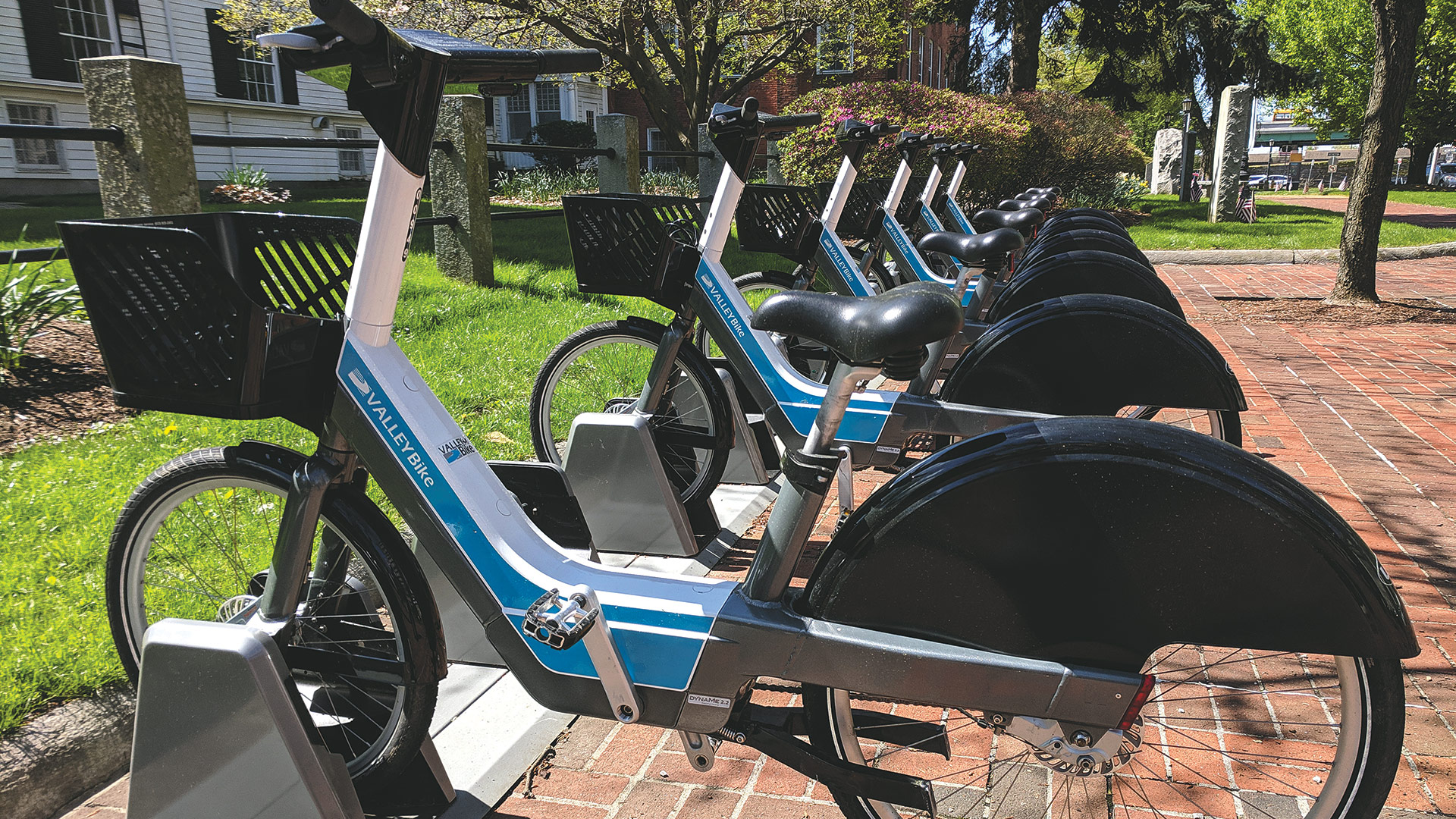
ValleyBike, a regional bike-sharing program, represents just one of the many ways the landscape has changed during Tim Brennan’s tenure leading the PVPC.
Surveying the scene in Springfield, and the region as a whole, Brennan said the linchpin to further progress and taking the renaissance to a much higher level is attracting young people.
“I hear this refrain all the time — when young people are prepared to settle down and have kids, they return to the Valley,” he said. “But many leave in the first stage of their career to chase bright lights, whether it be Boston, Atlanta, or Austin, Texas. We have to continue to look for ways to get into that vibrant mid-city niche.”
And one of the obvious keys to attracting young people is jobs, he went on, adding that this brings him to one project he knew he couldn’t finish before he left the PVPC, but wanted to at least see into the implementation stage — a high-speed east-west rail line.
He hasn’t been able to do that, either, but the planning commission, again, working with other agencies and individuals such as state Sen. Eric Lesser, has at least swayed the state to again study the concept.
“We did manage to convince the state not to throw the idea away entirely,” he noted, adding that the ongoing study will likely be wrapped up in a year or so.
East-west rail is critical to this region, he said, noting specifically the plight of many rural communities seeing their populations age and decline — a dangerous double whammy — and looking toward high-speed rail as one way to put their communities back on the map, especially as potential homes to young professionals who could work in the eastern part of the state, where the preponderance of good jobs are.
But Boston needs it as well, he said, adding that the Hub, while exploding economically, is suffering from a number of growing pains, including choking traffic and sky-high real-estate prices that threaten to limit its ceiling.
“It’s about 90 miles to Boston; if you equip the train with state-of-the-art wi-fi, we can replicate what my colleagues in California have talked to me about for years,” Brennan explained. “You get employers to allow their staff to log on to work while they’re on the train, so their commute time is work time. And they don’t necessarily have to go to work every day the way the world works now.”
However, Boston is facing what he sees as a much bigger problem — potentially devastating consequences from climate change.
“I’ve read the reports from the fourth climate assessment, and that was pretty startling in terms of what the scientists are saying,” he noted. “They’re saying, ‘folks, we don’t have a lot of time; get on this now.’”
Thus, it’s with those warnings that Brennan is coming full circle, as he noted, with the focus on the environment. Specifically, the annual meeting will feature a keynote address from Kenneth Kimmell, president of the Union of Concerned Scientists. The title of the program? “The Heat Is On: The Compelling Case for Confronting Climate Change and Realizing a Better Future.”
“I’m trying to leave here saying, in a backhanded way, ‘I came in here to this office, and the biggest challenge was the Connecticut River cleanup,’” Brennan said. “And I’m leaving with this — a warning about something that could kill people and create economic and other forms of devastation. We really do need to get on it.”
Living in the Present
As noted, climate-change work and helping to bring east-west rail service to fruition are assignments that will fall to the next director of the PVPC.
As for Brennan, the planning he’ll be focused on concerns his retirement, and he intends to carefully plan that as well.
He said there won’t be any consulting work for him — even though there would undoubtedly be many opportunities to do that. He plans to work for his daughter, do some traveling — he’s thinking about a trip to Spain and Portugal — and maybe learn how to sail. He has his pilot’s license but intends to keep his feet firmly on the ground.
He’ll also do something he hasn’t done in close to 50 years — work in one time zone. His goal is to find that equally intoxicating.
George O’Brien can be reached at [email protected]



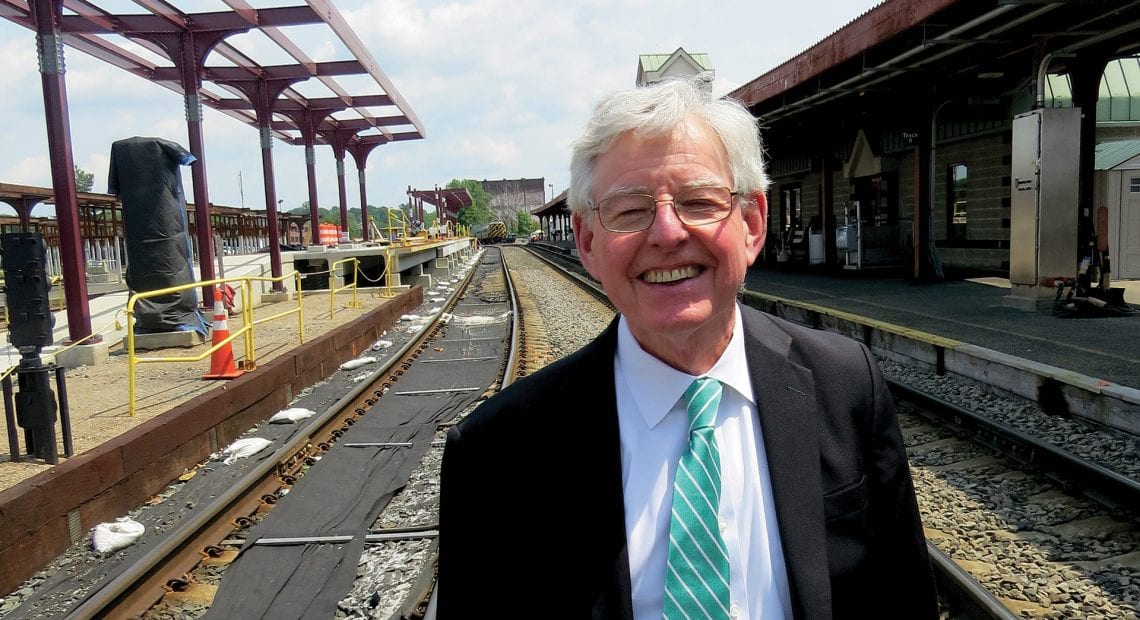




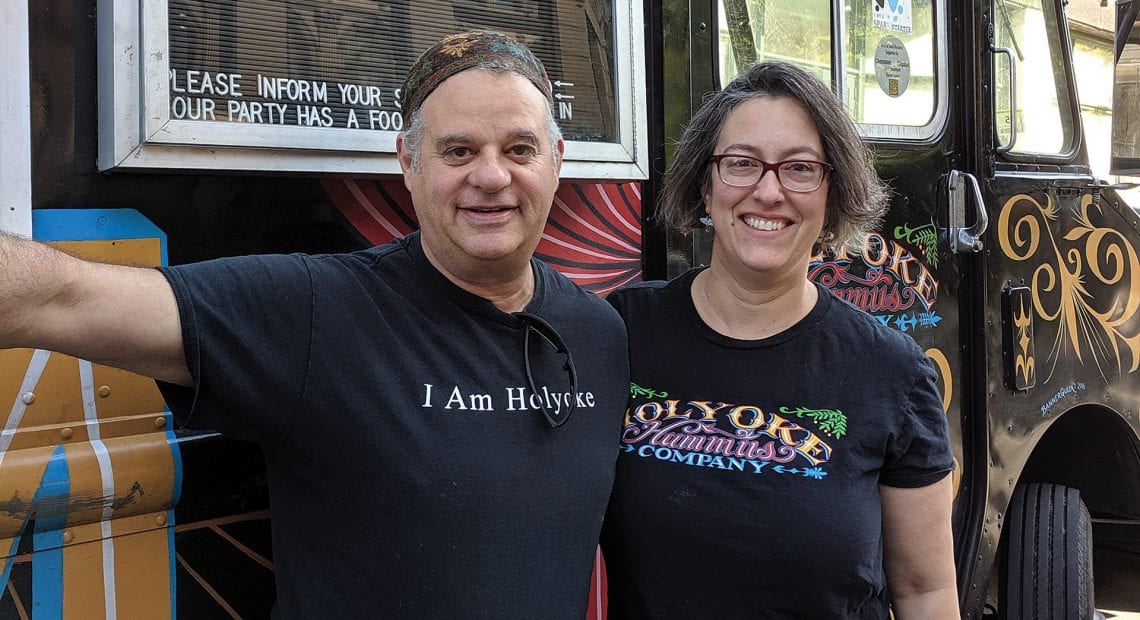



















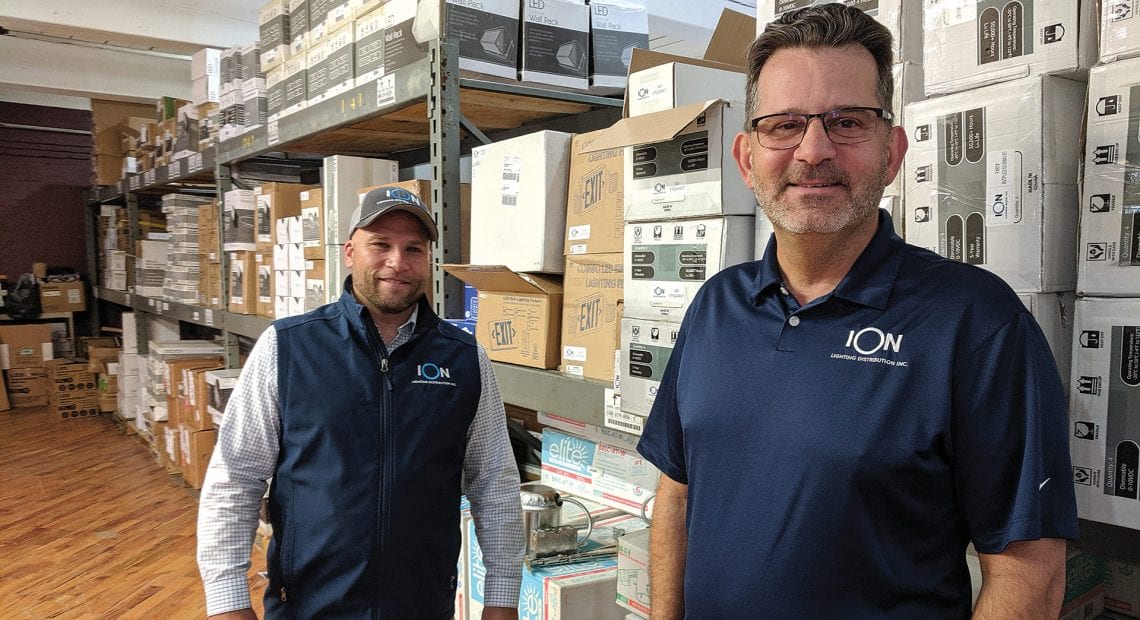

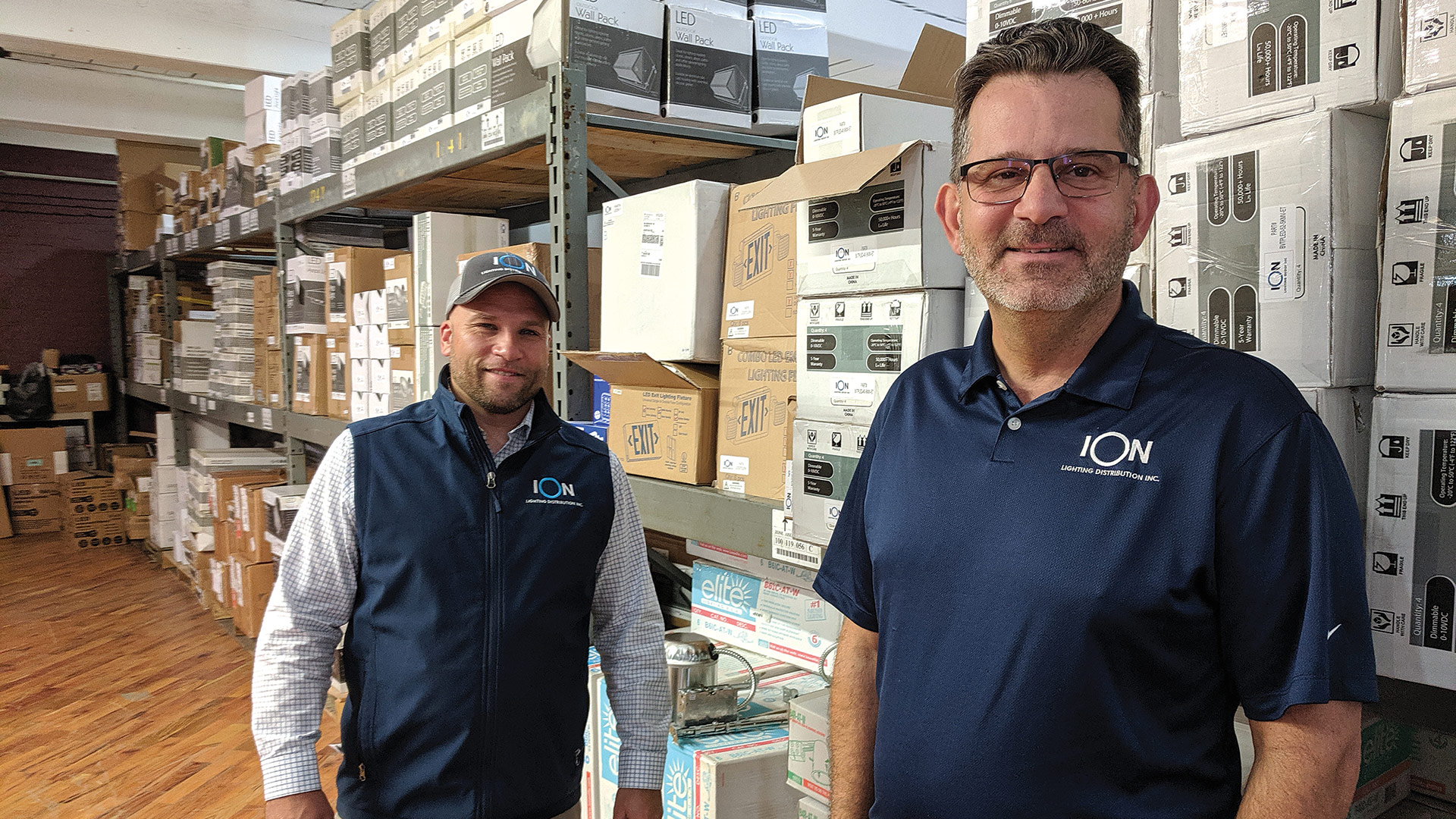

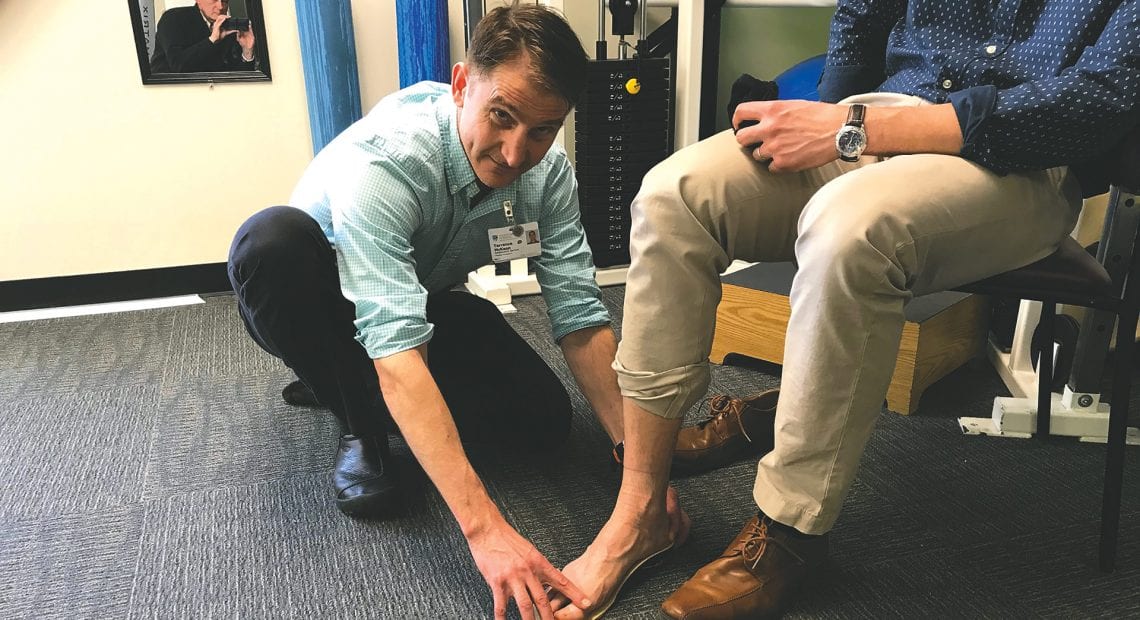
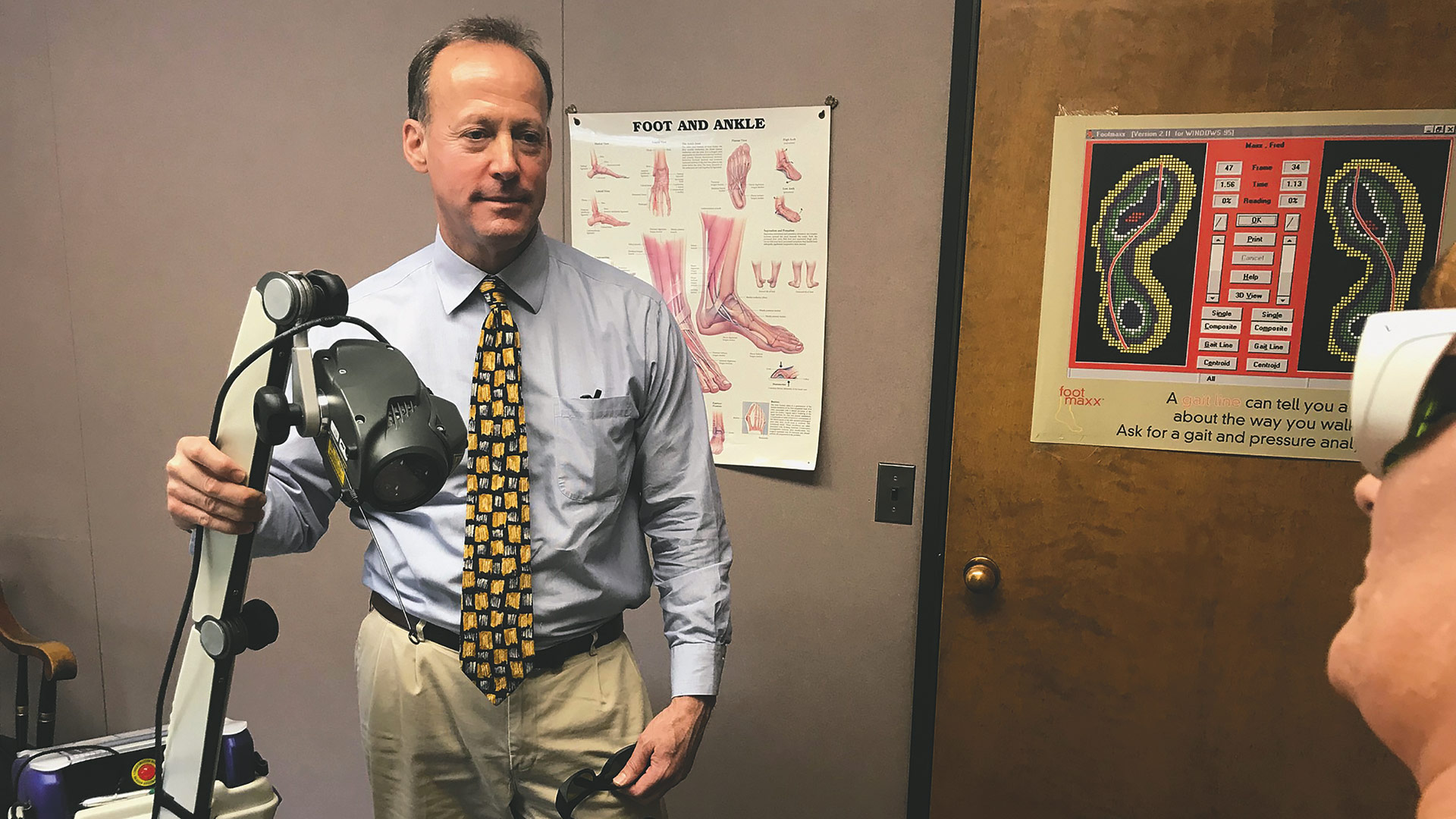
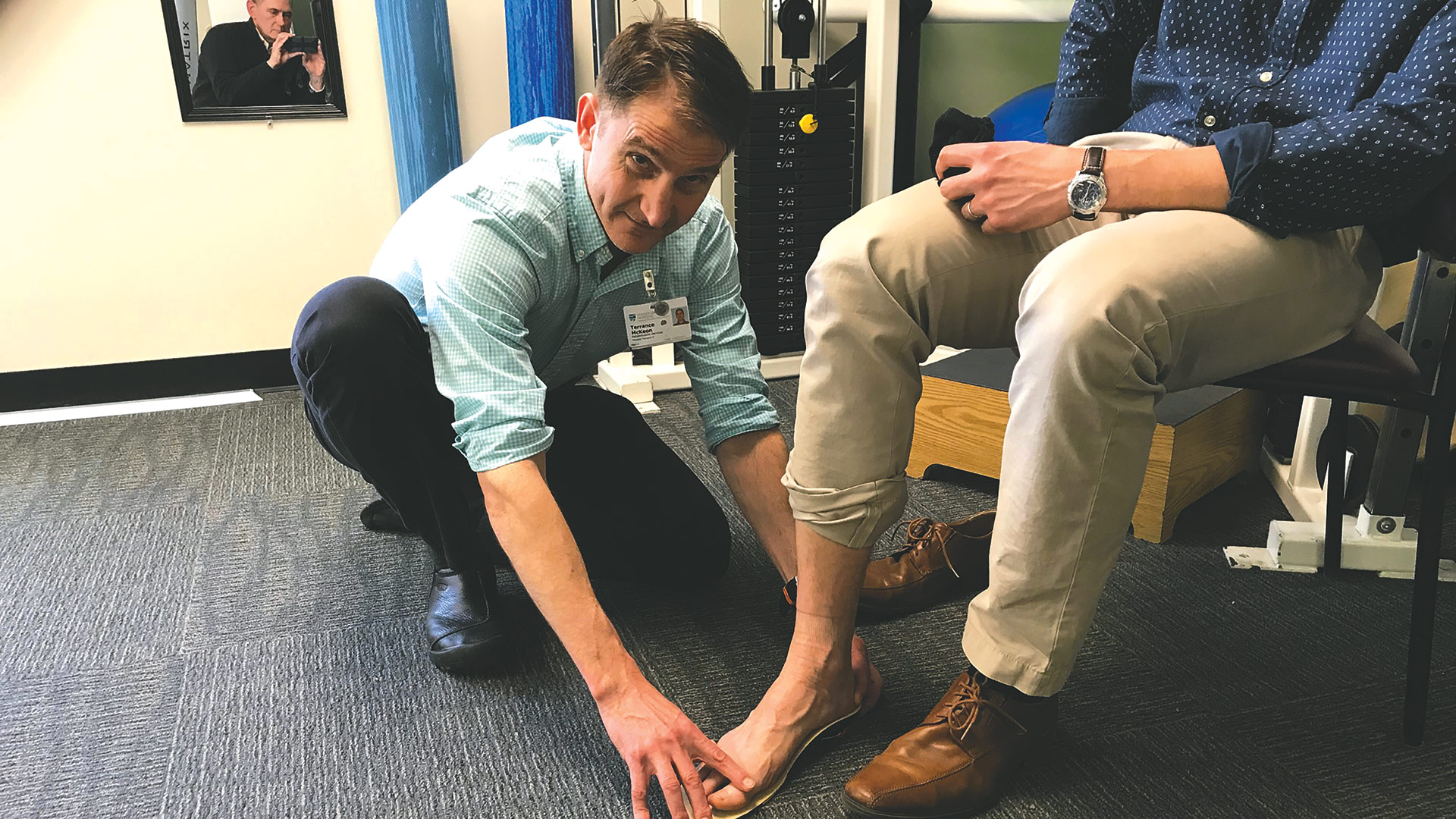
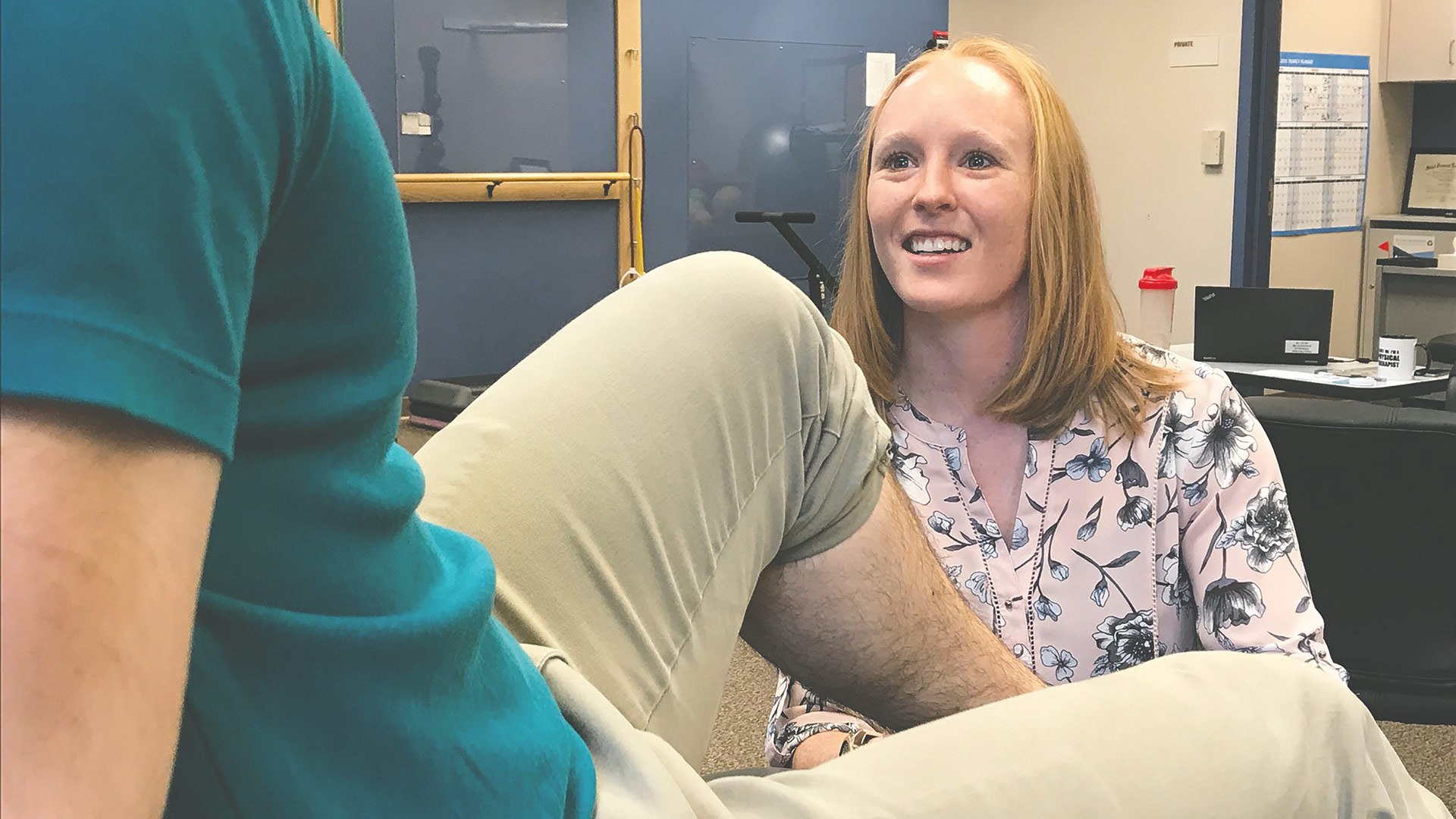
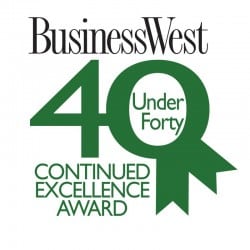




 Rothschild, then development and marketing manager for the Food Bank of Western Mass., was named to the 40 Under Forty class of 2011 mainly for her tireless work in melanoma awareness. A survivor herself, she began organizing local events to raise funds for the fight against this common killer, and launched a website, SurvivingSkin.org, and TV show, Skin Talk, that brought wider attention to her work.
Rothschild, then development and marketing manager for the Food Bank of Western Mass., was named to the 40 Under Forty class of 2011 mainly for her tireless work in melanoma awareness. A survivor herself, she began organizing local events to raise funds for the fight against this common killer, and launched a website, SurvivingSkin.org, and TV show, Skin Talk, that brought wider attention to her work.
